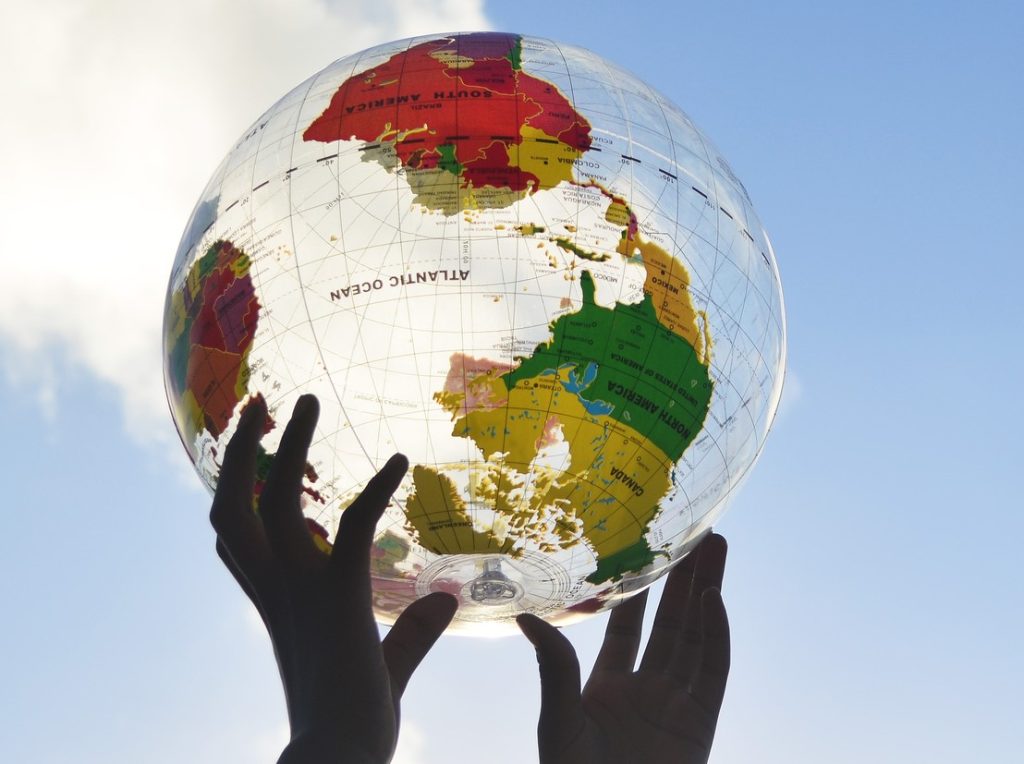
The term ‘global south’ is in constant use nowadays. For example, some commentators warn that Israel’s incursion into Gaza is ‘alienating the global south’, and we often hear that the ‘global south’ wants a ceasefire in Ukraine. But what do people mean when they use it?
Geographically, the term refers to the 32 countries below the equator (in the southern hemisphere), in contrast to the 54 countries that lie entirely north of it. Yet it is often misleadingly used as shorthand for a global majority, even though most of the global population is above the equator (as is most of the world’s landmass). For example, we often hear that India, the world’s most populous country, and China, the second most populous, are vying for leadership of the global south, with both having recently held diplomatic conferences for that purpose. Yet both are in the northern hemisphere.
The term, then, is more of a political slogan than an accurate description of the world. In this sense, it seems to have gained traction as a euphemism to replace less acceptable terms. During the Cold War, countries that weren’t aligned with either the United States or the Soviet Union blocs were said to belong to the ‘Third World’. Non-aligned countries held their own conference in Bandung, Indonesia, in 1955, and there are still 120 countries constituting a weak non-aligned movement today.
Nonetheless, with the Soviet Union’s demise in 1991, the idea of a non-aligned Third World no longer made much sense. For a time, it became common to refer to ‘less-developed countries’. But that term had a pejorative ring to it, so people soon began to refer to ‘developing countries’.
Although that term has its own problems—not all low-income countries are developing, after all—it proved useful in the context of United Nations diplomacy. The Group of 77 now comprises 135 countries and exists to promote their collective economic interests. Outside the UN context, however, there are too many differences between members for the organisation to serve a meaningful role.
Another fad term that has come into vogue is ‘emerging markets’, which refers to countries like India, Mexico, Russia, Pakistan, Saudi Arabia, China, Brazil and a few others. In 2001, Jim O’Neill, then a managing director at Goldman Sachs, coined the acronym BRIC in a paper that identified Brazil, Russia, India and China as emerging economies with high growth potential. Though he was offering investment analysis, some political leaders, including Russian President Vladimir Putin, seized on the grouping as a potential diplomatic platform to counter American global influence.
After a series of meetings, the first BRIC summit was held in Yekaterinburg, Russia, in 2009. With the addition of South Africa the following year, the group became the BRICS. Then, at the 15th BRICS summit this past August, South African President Cyril Ramaphosa announced that six emerging-market countries (Argentina, Egypt, Ethiopia, Iran, Saudi Arabia and the United Arab Emirates) would join the bloc on 1 January 2024.
Ever since it became a conference-holding body, the BRICS has often been seen as representing the global south. But, again, Brazil and South Africa (and soon Argentina) are the only members from the southern hemisphere, and even as a political replacement for the Third World, BRICS is rather limited conceptually and organisationally. While a few of its members are democracies, most are autocracies, and many have ongoing conflicts with each other.
For example, India and China have fought over a disputed border in the Himalayas; Ethiopia and Egypt have disputes over Nile River water; and Saudi Arabia and Iran are competitors for strategic influence in the Persian Gulf. Moreover, Russian participation makes a mockery of any claim to represent the global south.
The term’s main value is diplomatic. Though China is a middle-income country in the northern hemisphere that is competing with the US for global influence, it likes to describe itself as a developing country that plays an important leadership role within the global south. Still, in conversations with Chinese academics on a recent trip to Beijing, I found differences among them. Some saw the term as a useful political tool; others suggested that more accurate terminology would divide the world into high-, middle- and low-income countries. But even then, not all low-income countries have the same interests or priorities. Somalia and Honduras, for example, have very different problems.
For journalists and politicians, the high-, middle-, low-income terminology doesn’t roll easily off the tongue or fit well in headlines. For want of an alternative shorthand, they will continue to rely on ‘global south.’ But anyone interested in a more accurate description of the world should be wary of such a misleading term.

